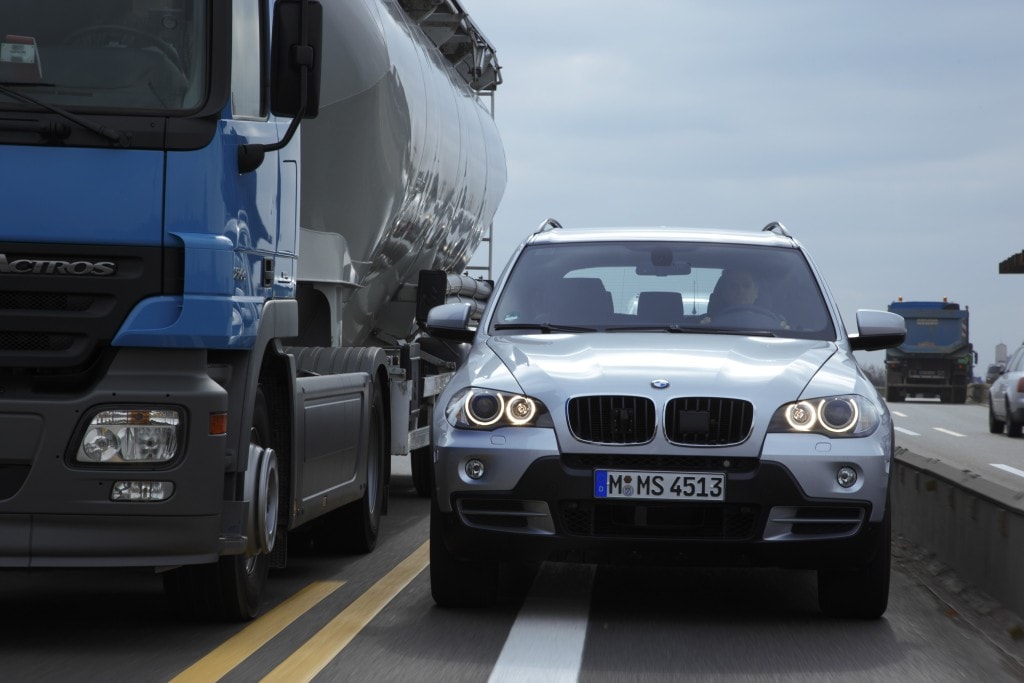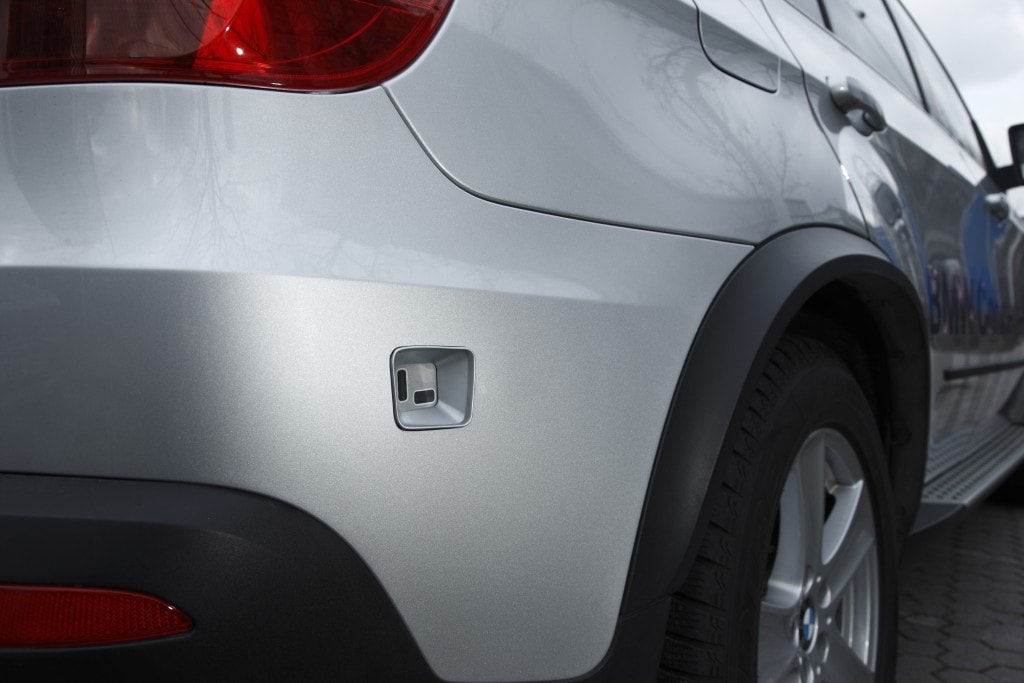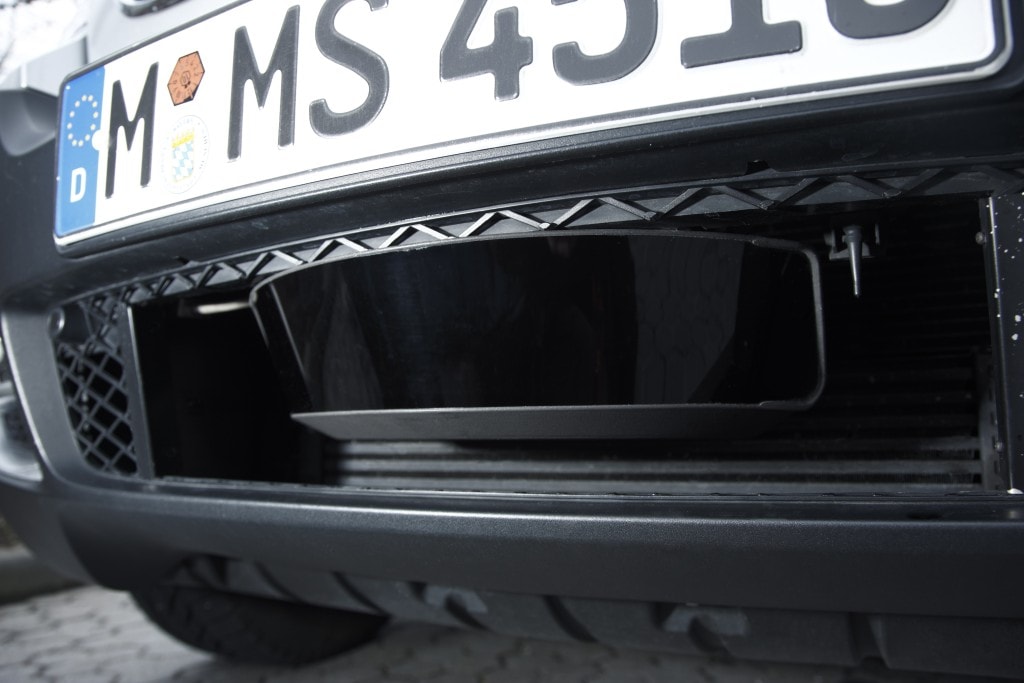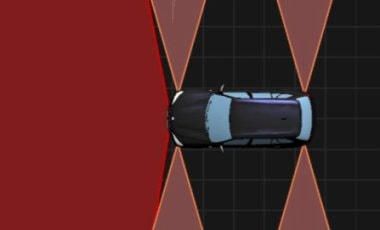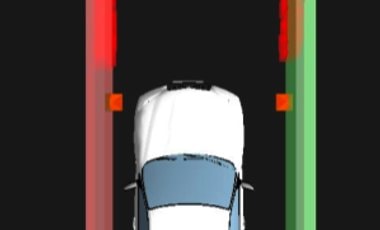The range of useful, high-tech gadgets for automobiles to be made available in the near future expands at an exponential rate, with more and more "toys for boys" being made available for the masses. The latest entry in this category is the BMW Narrow-passage Assistant, a technology to be used to navigate the car through narrow spots, regardless of the manner in which they manifest.
The technology behind the Narrow-passage Assistant is somewhat simple: a computer system uses various sensors to determine whether the car can fit into a narrow spot without grazing the paint or crashing the car. Its application, however, may be controversial, as it may spawn "should we trust tech so much?" debates.
Regardless, we set out here to shed some light on how this technology is supposed to work.
HOW IT WORKS
The BMW Narrow-passage Assistant takes into consideration, when calculating the lateral distance, yellow road markings, safety fences, barriers and even vehicles on neighboring lanes. The system is activated in conjunction with the lane departure warning system, which helps it orient towards the yellow road markings. It calculates the width of the road, dubbed by BMW preSite and the lateral clearance to side objects, a distance named by BMW inSite. The calculation is being made after information is received from either laser or ultrasonic sensors.
Depending on the findings of the sensors, the assistant sends the results to the driver by displaying it visually and advising them what to do.
preSite
The preSite reading coming from the system is intended to display the effectively available width of the road, prior to a passing maneuver. It displays the lateral clearance on both the left and right sides, sending three types of readings back to the driver. One circle means much space (0.5 – 1 meters), 2 circles means little space (0.2 – 0.5 meters), while 3 circles means it's gonna be a tight squeeze (under 0.2 meters). Should the distance go below the safety clearance, the system will send an additional warning via the HUD.
inSite
Once a driver assesses he has enough room to squeeze through, the inSite monitoring system kicks in. It keeps the driver on track throughout the maneuver, by monitoring the lateral distance. Using data coming from the lasers, the system sends back information directly via the steering wheel, as well as through the HUD.
SENSORS
The two types of sensor used by the BMW Narrow-passage Assistant are, as said, laser- and ultrasonic-based. The lasers are used by the system to monitor the space in front of the vehicle, scanning for other cars, barriers and safety fences. The lasers work at a horizontal beam angle of 160 degrees and a vertical one of 3.2 degrees, They can scan the road ahead for a distance of up to 100 meters.
The ultrasonic sensors, on the other hand, measure the lateral clearance to objects. They work on a horizontal angle of 32 degrees and a vertical one of 9.5 degrees. They have a range of up to 5 meters, depending on the velocity of the car.
FUTURE
Most likely, this technology will make it into production in BMW vehicles. Although it's not yet clear when or on what car it will be first featured, the BMW Narrow Passage Assistant is currently being tested on a BMW X5, modified to be the ideal testing platform.
As for the debates we mentioned in the beginning of this guide, it's all a matter of interpretation. The usefulness of the system is obvious, as it may help reduce both the stress on the driver who doesn't know where his car begins and where it ends, as well as possible damages to the vehicle. Yet, we have to ask ourselves: how much are you willing to trust the system? And, even more, do we suck so much at driving that we need this?
The technology behind the Narrow-passage Assistant is somewhat simple: a computer system uses various sensors to determine whether the car can fit into a narrow spot without grazing the paint or crashing the car. Its application, however, may be controversial, as it may spawn "should we trust tech so much?" debates.
Regardless, we set out here to shed some light on how this technology is supposed to work.
HOW IT WORKS
The BMW Narrow-passage Assistant takes into consideration, when calculating the lateral distance, yellow road markings, safety fences, barriers and even vehicles on neighboring lanes. The system is activated in conjunction with the lane departure warning system, which helps it orient towards the yellow road markings. It calculates the width of the road, dubbed by BMW preSite and the lateral clearance to side objects, a distance named by BMW inSite. The calculation is being made after information is received from either laser or ultrasonic sensors.
Depending on the findings of the sensors, the assistant sends the results to the driver by displaying it visually and advising them what to do.
preSite
The preSite reading coming from the system is intended to display the effectively available width of the road, prior to a passing maneuver. It displays the lateral clearance on both the left and right sides, sending three types of readings back to the driver. One circle means much space (0.5 – 1 meters), 2 circles means little space (0.2 – 0.5 meters), while 3 circles means it's gonna be a tight squeeze (under 0.2 meters). Should the distance go below the safety clearance, the system will send an additional warning via the HUD.
inSite
Once a driver assesses he has enough room to squeeze through, the inSite monitoring system kicks in. It keeps the driver on track throughout the maneuver, by monitoring the lateral distance. Using data coming from the lasers, the system sends back information directly via the steering wheel, as well as through the HUD.
SENSORS
The two types of sensor used by the BMW Narrow-passage Assistant are, as said, laser- and ultrasonic-based. The lasers are used by the system to monitor the space in front of the vehicle, scanning for other cars, barriers and safety fences. The lasers work at a horizontal beam angle of 160 degrees and a vertical one of 3.2 degrees, They can scan the road ahead for a distance of up to 100 meters.
The ultrasonic sensors, on the other hand, measure the lateral clearance to objects. They work on a horizontal angle of 32 degrees and a vertical one of 9.5 degrees. They have a range of up to 5 meters, depending on the velocity of the car.
FUTURE
Most likely, this technology will make it into production in BMW vehicles. Although it's not yet clear when or on what car it will be first featured, the BMW Narrow Passage Assistant is currently being tested on a BMW X5, modified to be the ideal testing platform.
As for the debates we mentioned in the beginning of this guide, it's all a matter of interpretation. The usefulness of the system is obvious, as it may help reduce both the stress on the driver who doesn't know where his car begins and where it ends, as well as possible damages to the vehicle. Yet, we have to ask ourselves: how much are you willing to trust the system? And, even more, do we suck so much at driving that we need this?

